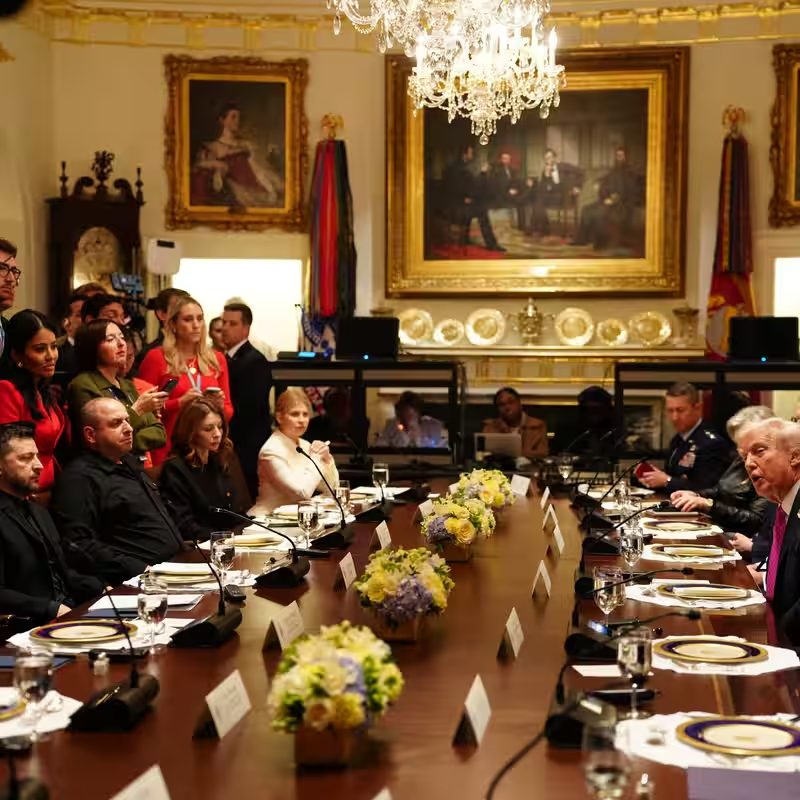Table of Contents
- Trump’s Initial Tomahawks Proposal
- Zelensky’s Pitch at the White House
- The Pivotal Putin Phone Call
- Why Trump Backed Off on Tomahawks
- What This Means for Ukraine and Global Diplomacy
- Sources
Trump’s Initial Tomahawks Proposal
Earlier this week, President Donald Trump floated a bold idea that electrified Kyiv and rattled Moscow: supplying Ukraine with U.S.-made Tomahawk missiles. These long-range, precision-guided weapons could strike deep inside Russian territory—something Ukraine has long sought to level the battlefield.
The proposal gave Ukrainian President Volodymyr Zelensky renewed hope. He scheduled a high-stakes meeting at the White House on Friday, October 17, 2025, aiming to finalize a deal that could shift the momentum of the war.
Zelensky’s Pitch at the White House
During the meeting, Zelensky made a compelling case: a weapons exchange. Ukraine would offer its advanced drones in return for Tomahawk missiles, which have a range more than five times greater than the Army Tactical Missile Systems previously approved under President Biden .
Initially, Trump appeared open. “They make a very good drone,” he acknowledged. But within minutes, his tone shifted.
“One thing I have to say: We want Tomahawks also,” Trump said. “We don’t want to be giving away things that we need to protect our country.”
The Pivotal Putin Phone Call
What changed? A two-hour phone call between Trump and Russian President Vladimir Putin on Thursday proved decisive.
According to Trump, he even joked during the call: “Would you mind if I gave a couple of thousand Tomahawks to your opposition?” Putin, unsurprisingly, “didn’t like the idea. Tomahawk is a vicious weapon… incredibly destructive.”
By Friday, Trump was publicly retreating from his earlier stance, citing concerns about escalation and emphasizing peace over firepower.
Why Trump Backed Off on Tomahawks
This reversal marks the latest instance of Trump altering his foreign policy posture after direct engagement with Putin—a pattern that has drawn scrutiny from allies and critics alike.
Despite past frustrations—calling Putin’s peace promises “bullshit” as recently as July—Trump continues to believe he can broker a deal. “I think he wants to make a deal,” Trump said on Friday, even when asked if Putin might be “playing” him.
His new position: “Hopefully we’ll be able to get the war over without Tomahawks.”
Zelensky, visibly disappointed, told reporters outside the White House: “I want not to make statements about it… The United States doesn’t want escalation.” He added pointedly, “I think that Russia is afraid about Tomahawks. Really afraid.”
What This Means for Ukraine and Global Diplomacy
The Tomahawks for Ukraine reversal has significant implications:
- Military imbalance: Without long-range strike capability, Ukraine remains limited in its ability to deter or retaliate against deep Russian logistics and command centers.
- Diplomatic uncertainty: Trump’s reliance on personal rapport with Putin undermines traditional alliance structures and creates unpredictability in U.S. foreign policy.
- Upcoming summit: A proposed U.S.-Russia summit in Hungary, along with Secretary of State Marco Rubio’s planned meeting with Russian Foreign Minister Sergey Lavrov, now carries even higher stakes.
While Trump insists both sides should “stop where they are” and “let both claim Victory,” Ukraine fears that freezing the conflict in place would cement Russian territorial gains.




